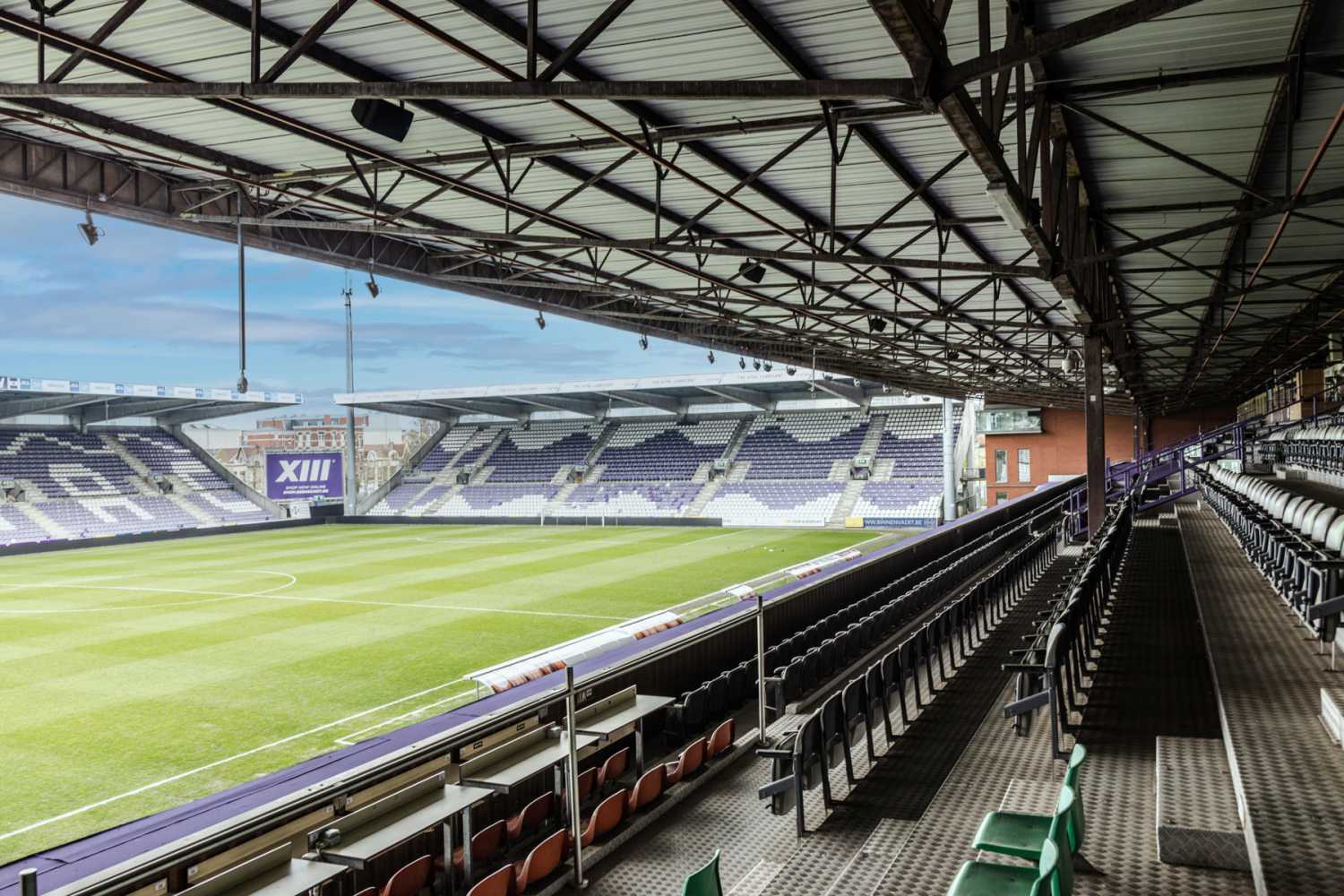Olympisch Stadion upgrades with Powersoft
- Details

“PFL – one of our preferred dealers – came to us for advice on their design and budget in reference to renewing the stadium’s existing sound system, which was about 25 years old at the time,” said Steven Kemland, manager at Face Projects. “Beerschot wanted to have an installation to improve quality of speech and to be able to play a good ambient sound; the latter of which was not really possible with the old system.
“From the first design we were able to answer all their questions within the budget they had in mind, so we were not forced to make any backup plans.”
The system would need to transmit both speech and energising music, with volume and fidelity key aspects in setting the right ambiance, allowing spectators and football team to perform at their best.
The team chose three Powersoft’s Quattrocanali 8804 DSP + Dante to drive the 25 x Martin Audio CDD15-WR and 17 x CDD10-WR (which are used as delay). This is controlled by a Dynacord Matrix made up of an MXE5 mix engine and a pair of TPC-1 touch panel controllers, as well as Van Damme LSZH Speaker Cables.
“We love Powersoft and the people involved,” said Kemland. “We know that this great range of products can serve all projects with in a very professional way. Between the Quattrocanali, Ottocanali, Mezzo, and T Series, we have solutions for everything, from very simple projects to more complex installs. With the Quattrocanali 8804, you have a lot of power, on-board DSP, and Dante, all in compact format; not only regarding size of the unit, but the necessary current and cooling too. To have all of this – for a price you can defend to a client – is invaluable to a company like ours.”
The system is also useful for security support in crowd control and public address applications, thanks to its easy-to-use zoning capabilities via the pre-programmed TPC-1 touchscreens that communicate with the Dynacord MXE5 Matrix processor.
The team made good use of Powersoft’s proprietary ArmoníaPlus software, which they used to tune the entire system. “In ArmoníaPlus you have all the parameters you need to adjust and secure the system as much as is necessary. In this project it was strange to be able to replace a complete 42-unit rack filled with 20-year-old amplifiers with just three units and still have the 12 zones in the stadium with a total power of 20,000 Watts.”
To ensure the team was prepared for special events, an external connection port with a Radial Engineering interface has installed near the field to be able to plug analogue signals into the Dante network and use the main sound system without any hassle.
Although technical design was done by Face Projects on behalf of PFL, both teams worked together on installing the new set-up, and support and maintenance will be followed up solely by PFL.
“The stadium won’t be at full capacity until September, but everyone at the smaller (100-capacity) games so far has been really happy with the new system,” said Kemland. “Overall, this has been a great project, and Powersoft can rest assured that they have a proud dealer and another happy customer.”
















